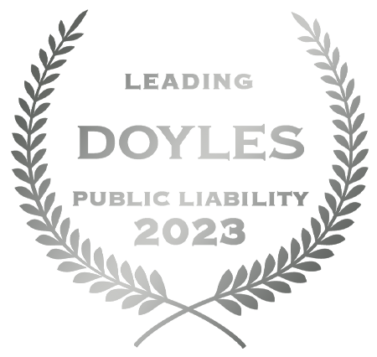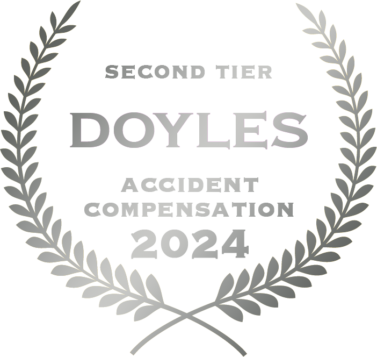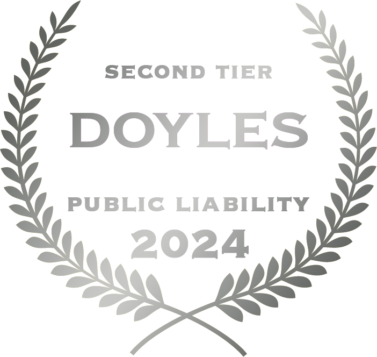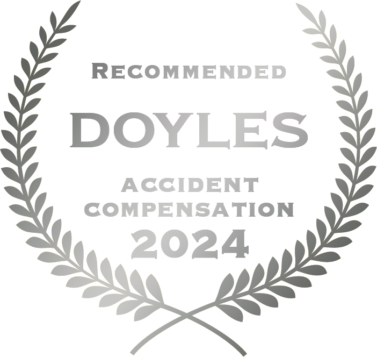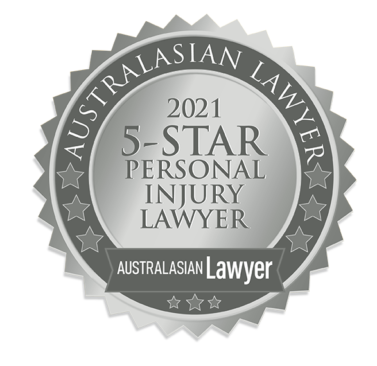
Personal Injury Claim Time Limits.
If you’ve been injured, it can put strain on every area of your life: social, emotional, physical, and financial. Most people don’t apply for personal injury benefits because they want to, they apply because they have to. And that’s why different personal injury benefits exist in the first place – to protect you if you’re injured, and to help you get your life back on track.
However, personal injury claim time limits do apply, and it’s important to understand them so that you don’t miss out on anything you may be entitled to. There are different types of claims available based on the circumstances of your injury, and it’s best to act promptly when you make a claim. This article will run you through everything you need to know about personal injury claim time limits.

What is the personal injury claim time limit?
In New South Wales there are different time limits for each claim type for when you need to lodge your claim form, and there’s a three-year time limit for ever taking an injury to court. There are, however, sometimes exceptions. You may only find out about the severity of your injury or only learn that you were the victim of negligence outside of the three-year period. In these cases, you have a reasonable explanation of why you didn’t lodge within the time frame, and you can still pursue your claim. If you only find out about the lasting impact of an incident after three years have passed, then you’re likely still able to make a claim.
There’s still a hard time limit, known as a ‘long-stop limitation period’, which means that you can’t make a personal injury claim more than twelve years after an injury or incident has occurred.
While the personal injury claims time frame is three years, it’s better to lodge your claim as soon as possible, and there are some deadlines within that period which will vary by claim type. People often put off making a claim because the process feels stressful and overwhelming, or they’re simply not sure where to start. This is why having a personal injury lawyer on your side can make a world of difference. A good lawyer will help you make a claim, and make sure you’re aware of the personal injury claims time frame so that you don’t miss out. At Law Partners we’re specialists in personal injury claims, and we win over 99% of our cases.
While there are time limits for every claim type, there’s still potential for flexibility. If you’re not sure if you’re still eligible to make a claim, and even if you think it’s too late, get in touch with us today to speak to one of our specialist personal injury lawyers and find out how we can help.
Call 13 15 15 or chat to us now for free advice
Chat nowFind out how much you can claim.
Get startedDate of discovery
Sometimes you might develop an injury over time, or you don’t realise the extent of the injury until much later. In these cases, you have three years from the date of discovery. Date of discovery is the first date you notice the injury – for example you might have to take time off work due to pain or schedule a doctor’s appointment to address it.
Date of discovery can mean several things, including:
- The date you find out about an injury – like if you’ve developed a repetitive strain injury at work that’s progressed over time
- The date you discovered a breach of duty of care, like if a doctor was negligent in a way that’s caused you harm
- The date it became apparent that as a result of negligence that you already knew about, you’ve suffered an injury later down the track
For more information about the personal injury claims process, have a look at our personal injury claims guide.
Motor vehicle accident claim time limits
In NSW the Compulsory Third Party (CTP) scheme is insurance paid by drivers to cover any injuries caused by a vehicle. If you’ve been injured in a motor vehicle accident – as a driver, passenger, pedestrian, or rider – then you can claim benefits to cover your lost wages for any time you have to take off work, payments to cover your medical expenses, and even lump sum payouts. You have three months to lodge your CTP claim form with the insurer. If you’ve had to take time off work, you’ll need to lodge within 28 days for the insurer to back-pay your lost wages to the date of the injury. If you lodge between 28 days and the three-month time limit, then your wages will only be paid from the date you claimed.
There’s often the potential to extend these timeframes in certain circumstances because if you’ve been injured, lodging a claim is probably the last thing on your mind. However, if you’re in a position where you realise you have to make a claim and it’s outside the time limit, chances are it’s not too late. For more about lodging a motor vehicle accident claim, have a look at our CTP claims guide or call us today for a free, confidential discussion with one of our specialist CTP lawyers.
Workers compensation claim time limits
In NSW, workers compensation claims are managed by the State Insurance Regulatory Authority (SIRA), which will oversee any claims made. Workers comp claims exist to protect you if you’ve been injured on the job. They can cover lost wages, future economic damages, treatment and medical costs, and even lump sum payments.
After a workplace injury, or becoming aware of it, SIRA gives you six months to lodge your claim form. It’s best to make a claim as soon as possible after a workplace injury to stay within the six-month limit, though there is still the potential to make a claim after six months in some circumstances, so it’s always in your best interests to seek advice from a workers compensation lawyer to determine if you’re able to make a claim.
Medical negligence claim time limits
A medical negligence claim can help you regain control over your life if you’re injured, or further injured, because of a medical professional failing their duty of care to you. If you’re in this position, making a claim can help you with the burden of treatment, lost income, travel expenses, domestic assistance, with the potential for significant lump sum claims.
To make sure you don’t miss out on anything you may be entitled to, you should lodge within the medical negligence claim time limit of three years. In some cases, the results of the negligence won’t become apparent until longer than three years after the incident occurred, or you may not even know that negligence had occurred, and in these cases you may still be able to make a claim.
Public liability claim time limits
You’ll be eligible for a public liability claim if you’re injured in a public place where you could expect a reasonable duty of care, like a shopping centre, on a train station platform, or in a public building. A claim can help you cover any losses caused by your injuries and ease any financial strain that it caused. The public liability claim time limit means that you’ll have to make a claim within three years of the injury or accident.
If you think you might be eligible for a public liability claim then you can contact us directly to talk about your situation, or have a look at our Public Liability Claims Guide.
While the personal injury claim time frames exist for each claim type, it’s important to remember that they aren’t the end of the road. Sometimes injuries take a long time to surface, or you may not have realised you were eligible for compensation, or something has developed over a long period of time. It’s always worth seeking advice from a specialist personal injury lawyer to see if you’re eligible to make a claim. Tell us a bit about your experience or give us a call today and we’ll offer you free, confidential advice about your situation.

Chantille Khoury
Principal
Chantille is a multi-award-winning, preeminent workers compensation specialist with over 20 years’ experience. Having ranked top 6 nationwide in the highest category of the Doyle’s Guide, Chantille is now providing feedback on policy changes for the Personal Injury Commission and government bodies.
Related articles
Do I have a case?
Our senior lawyers will assess your case for free.


